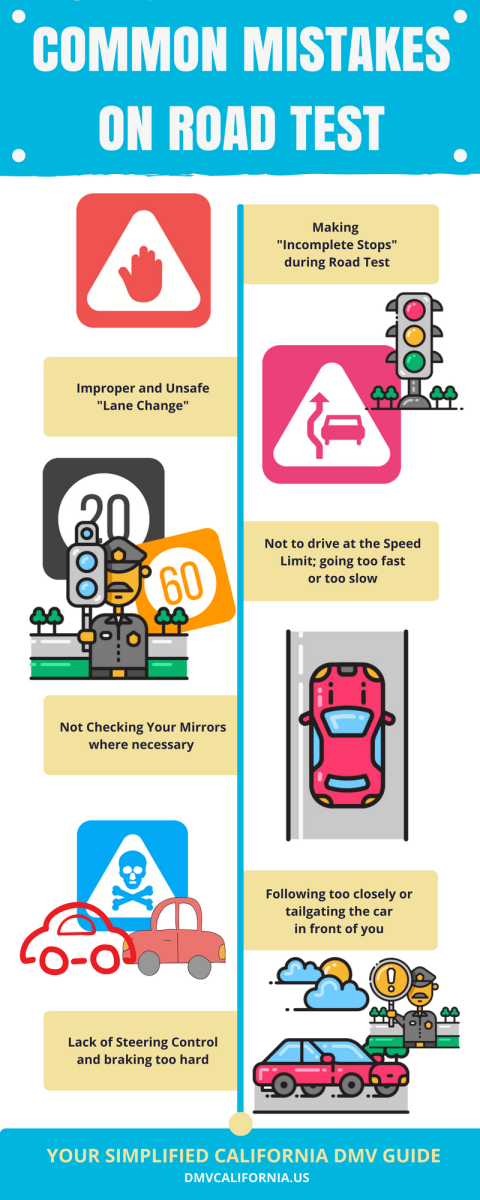Red lights mean stop. Green lights mean go. Yellow lights mean yield… but sometimes go? Driving is complicated. With all of the laws people must follow for driving, it is not surprising that new drivers are looking for an easy pass on their driver’s test to get their license. But what most students fail to realize is when someone’s driving skills are mediocre, they bring those to the world of driving; in turn, there is a higher risk of accidents, especially with teen drivers. Now, if driving tests were harder, that would change everything.
As students enter sophomore year, many look forward to obtaining their driver’s license; to them, a driver’s license and off-campus pass finally give them the freedom from school that they desire. They are so hasty to get on the road that they look for the easiest route, wanting the least number of obstacles and the most straightforward path to a license. This results in students going to the “lenient” driving agencies to get away with making small mistakes and having easier practical and on the road exams.
However, if these small mistakes are not corrected in the beginning, these habits follow teen drivers into their adult lives. With enough people making small errors, there is a higher chance of accidents. The U.S. is known for having easier driving tests than other countries—for example, obtaining a driver’s license in the U.K. makes the person qualified to drive in the U.S. as well, but not vice versa.
This example can further be reflected in the number of vehicular deaths occurring in both countries annually. A driver is four times more likely to die in a car accident in the U.S. than in the U.K. In 2023, the U.K. had a total of 1,624 people killed, while 40,990 died in car crashes in the U.S. Taking the populations of the countries into consideration, it can be seen that approximately 0.000025% of the U.K.’s population compared to 0.000120% of the U.S’s population died in 2023 in vehicle accidents.
These are then reflected in the prices of insurance. In the U.S., it is an average of $2,329 per year for a new driver, whereas in the U.K. the prices range between €1,500 to €2,000 ($1,645 to $2,194). With teens more likely to crash or break the law, insurance companies often end up paying more money than they would like to the party affected by a crash. To counter this, they raise the price of new driver insurance. Now, if accident rates were lower with teen drivers (which would occur if the cutoff for passing the driving tests was higher), the amount of money to pay for security would drop in accordance as well.
This can be done by having harder tests to make sure students are learning the correct way of driving. Harder tests would eliminate the chances of mistakes happening as proper habits would be drilled into memory. Driving tests need to be harder, not just for the insurance (life and money-wise) of the drivers themselves, but also those around them.







